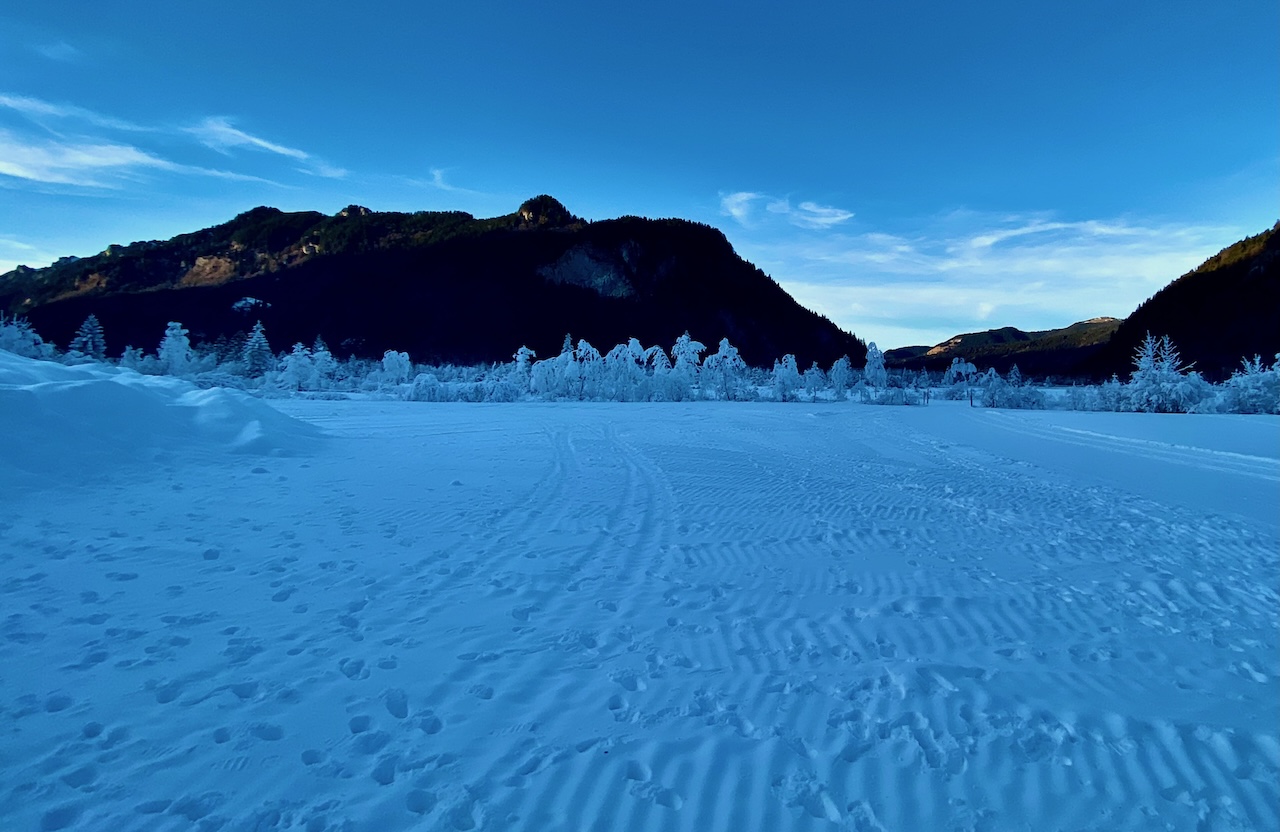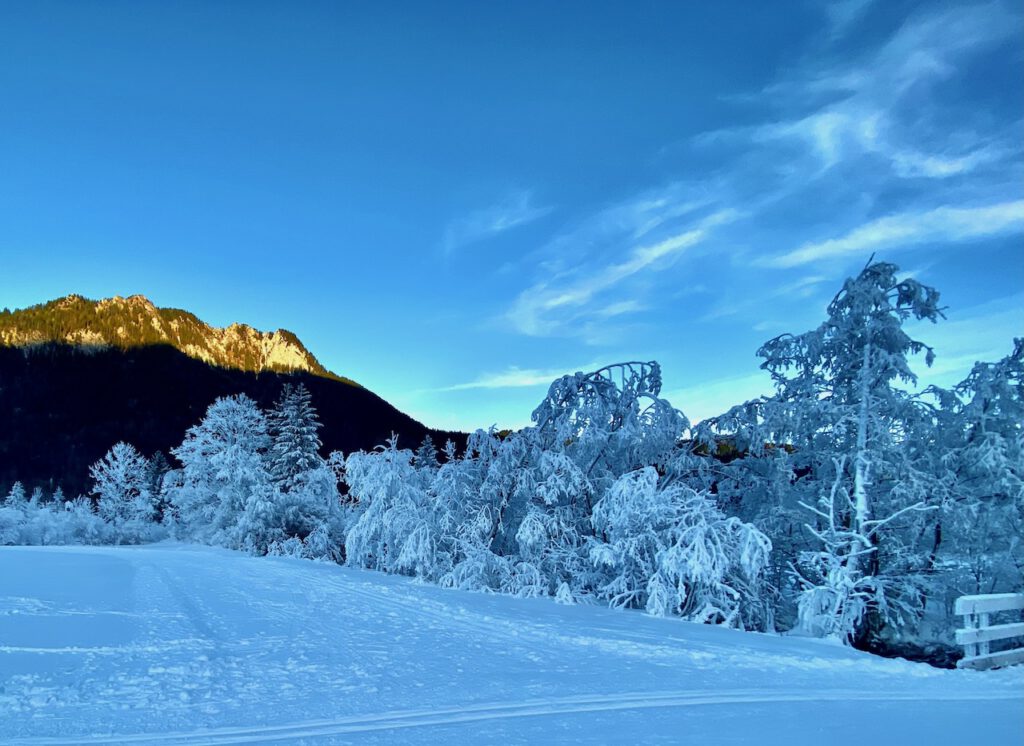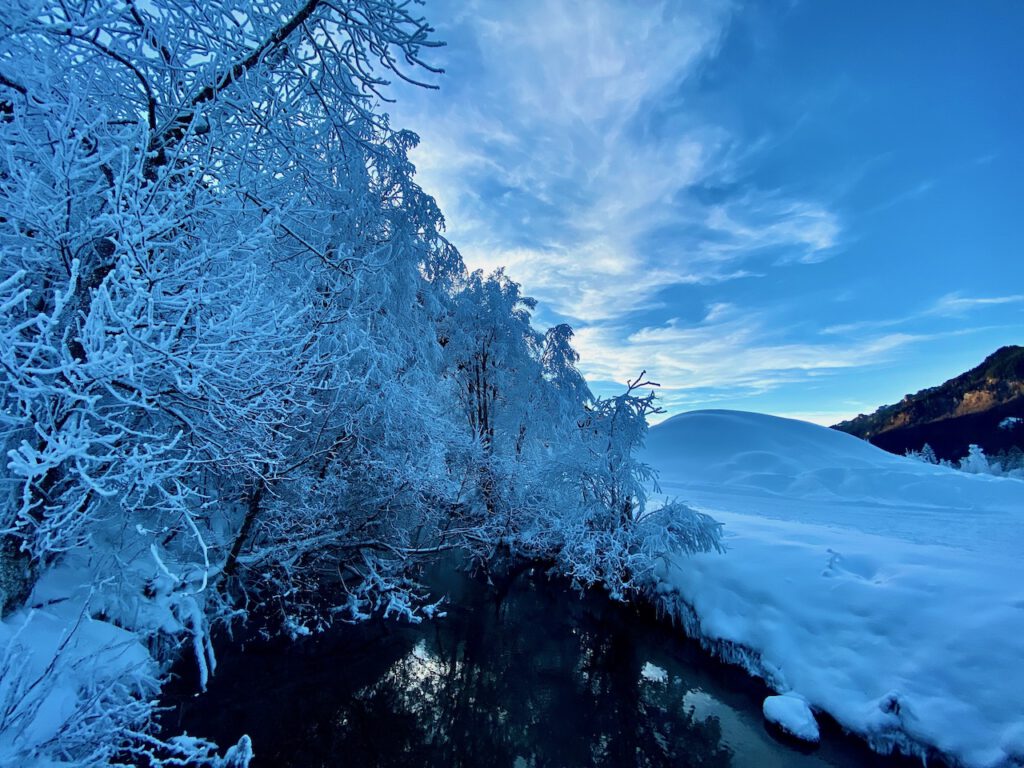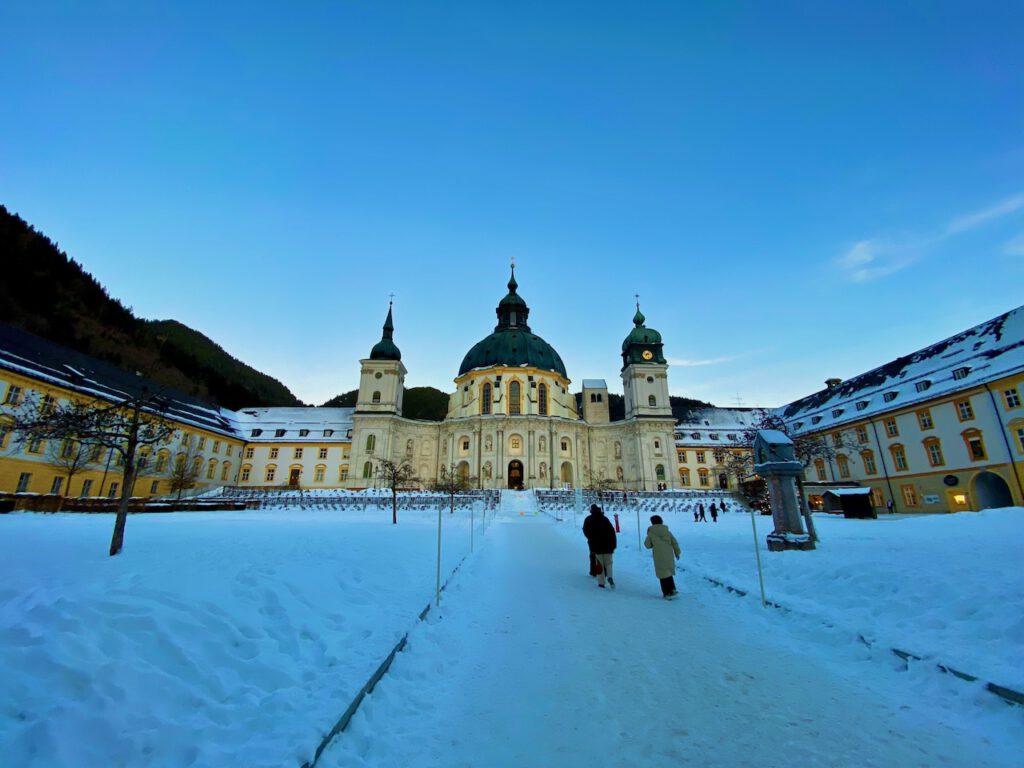Winter Wonderland in den Bergen und traumhaft schöne Raureif-Formationen
Peter Engelmann, Januar 2025
Bäume, Büsche und gefrorenes Gras, bedeckt mit Raureifschichten, sind großartige Motive für Landschaftsfotografen. Sie lieben dieses meteorologische Phänomen, weil es fantastische, verzauberte Landschaften schafft. Ein wahrhaft magisches „Winterwunder-Land“.
Am 1. Januar 2025 ließ sich eine solch außergewöhnliche Szenerie in einem Alpental in der Nähe des berühmten Klosters Ettal in Oberbayern bewundern.
Das Graswangtal ist immer ein spektakulärer Ort für Fotografen und Filmemacher. Der Taleinstieg öffnet den Blick auf eine grandiose, felsige Gebirgslandschaft. Von hier aus führt eine Straße hinauf zu Schloss Linderhof, einem der geliebten Schlösser des Märchenkönigs Ludwig II.
Im Zauberland
Wen wundert es da, dass die Region den Ruf eines romantischen Märchenlandes hat, das auch Künstler inspirierte. Sie liegt inmitten des Naturparks Ammergauer Alpen. Hier die empfehlenswerte Website für weitere Informationen: https://www.ammergauer-alpen.de/

An manchen Tagen aber wird diese Landschaft noch faszinierender, als sie ohnehin ist, und ihre Eindrücke lassen uns unsere moderne, rationale Welt vergessen – auch wenn das Verkehrsaufkommen durch den Tourismus nie weit weg ist.
Das Wetter spielt dabei eine große Rolle.
Um Weihnachten und Neujahr 2024/25 lagen Mitteleuropa und Süddeutschland unter einem lang anhaltenden Hochdrucksystem und einer sogenannten Inversionsschicht. Das bedeutet, dass die Temperaturen auf den Berggipfeln höher waren und in den Tälern oder tiefer gelegenen Teilen des Landes niedrig blieben. Diese Inversionslagen führen im Winter zu viel Nebel.
Fifty Shades of Grey
Dieser Nebel zeigt sich sehr unterschiedlich: Bei Hochnebel kann er eher wolkenähnlich sein (niedriger Stratus). Die Berggipfel liegen oft über diesem Nebel und von oben sieht die Szenerie aus wie ein Nebelmeer. Befindet man sich hingegen in einem Tal, erlebt man ihn als graue Wolkendecke. Manchmal gibt es auch Bodennebel mit eingeschränkter Sicht, eine Wettersituation, die sich aber in ständigem Wechsel mit milchigem Sonnenlicht befindet, wenn die Sonne, vor allem über Mittag, durch den Nebel bricht.

Feuchtgebiete wie Moor- oder Bachtäler schaffen oft ihr eigenes Mikroklima mit Nebel. Im Graswangtal gibt es nicht nur die Ammer, sondern auch eine Reihe von Quellen und viele kleinere Bäche, die aus den Bergen und Feuchtgebieten kommen – perfekte Bedingungen für Nebel und Raureif.
Aber warum sind diese Schichten aus Eiskristallen um Bäume und Äste so dick?
Eine Möglichkeit:
Nebel erzeugt eine spezielle Art von Raureif, die „Raueis“ genannt wird. Er ist etwas anders als der ursprüngliche Raureif.
Raueis entsteht, wenn Nebel gefriert. Nebel besteht aus sehr kleinen Wassertröpfchen. Wenn diese Tröpfchen mit kälteren Oberflächen in Berührung kommen, entsteht Raueis, während Raureif ein gefrorener Niederschlag von Wasserdampf in Eisform ist.
Raueis und Reif sind sechseckige Kristalle aus gefrorenem Wasser. Die Bindung zwischen Wasserstoff und Sauerstoff führt zu dieser sechseckigen Form, die durchsichtig ist, aber aufgrund der diffusen Reflexion weiß erscheint.
Das macht Raureif und Raueis für Fotografen so faszinierend. Kombiniert mit etwas Schnee und stabilen kalten Wetterbedingungen, die immer mehr Eiskristalle bilden, entstehen so geradezu magische Landschaftsbilder.
Wenn Ihr solche Bilder machen wollt, solltet ihr unbedingt den Wetterberichten folgen und am besten schon frühmorgens vor Ort sein. Die Sonne lässt das Eis auf den Bäumen nämlich meist schnell schmelzen.
Topographie
Zu den Besonderheiten des Graswangtals gehören einzelne Stellen, an denen die Sonne im Winter nie den Talboden erreicht. Wenn Ihr also nach faszinierenden Raureif-Motiven sucht, sind ein Tal oder eine Schlucht mit einem Bach, die den ganzen Tag über im Schatten der Berge liegen, eine gute Wahl. Das Tal verläuft von Westen nach Osten und hat hier, wo die Bilder entstanden sind, Öffnungen nach Osten, was die Luftströmung ebenfalls beeinflusst.

Kalte Temperaturen und den ganzen Tag über Schatten auf der Südseite des Tals
Tolle Motive in der Umgebung: Kloster Ettal
Immer einen Besuch wert: Kloster Ettal liegt in der Nähe des Graswangtals. Das Benediktinerkloster, in dem heute 50 Mönche leben, wurde im Jahr 1330 gegründet. Die beeindruckende Klosterkirche ist ein barocker Wiederaufbau, nachdem das ursprüngliche Gebäude im 18. Jh. durch Brand zerstört worden war. Besonders sehenswert ist neben der Basilika die Rokoko-Sakristei.
Extra-Tipp: In der gut sortierten Buchhandlung des Klosters findet Ihr eine große Auswahl an Wanderführern und Bildbänden zur Region, aber auch weit über die Region hinaus. Auf der anderen Seite führt die Straße durch das Graswangtal zum berühmten Schloss Linderhof, zur deutsch-österreichischen Grenze und zum Plansee, einem langen Alpensee.

ANFAHRT
Das Graswangtal ist von Garmisch-Partenkirchen, von Oberammergau und von Reutte in Tirol aus erreichbar.
Die Züge halten in Garmisch-Partenkirchen und Oberammergau. Von Oberammergau fährt ein Bus, Linie 9622. Eine besondere Attraktion ist im Sommer der „Ringbus“, ein Sonderbus für Touristen und Wanderer, der in Oberau startet.
© Deutsche Übersetzung: Susanne Niemuth-Engelmann / Redaktionsbüro Niemuth, https://redaktionsbuero-niemuth.de/ / 26.01.25